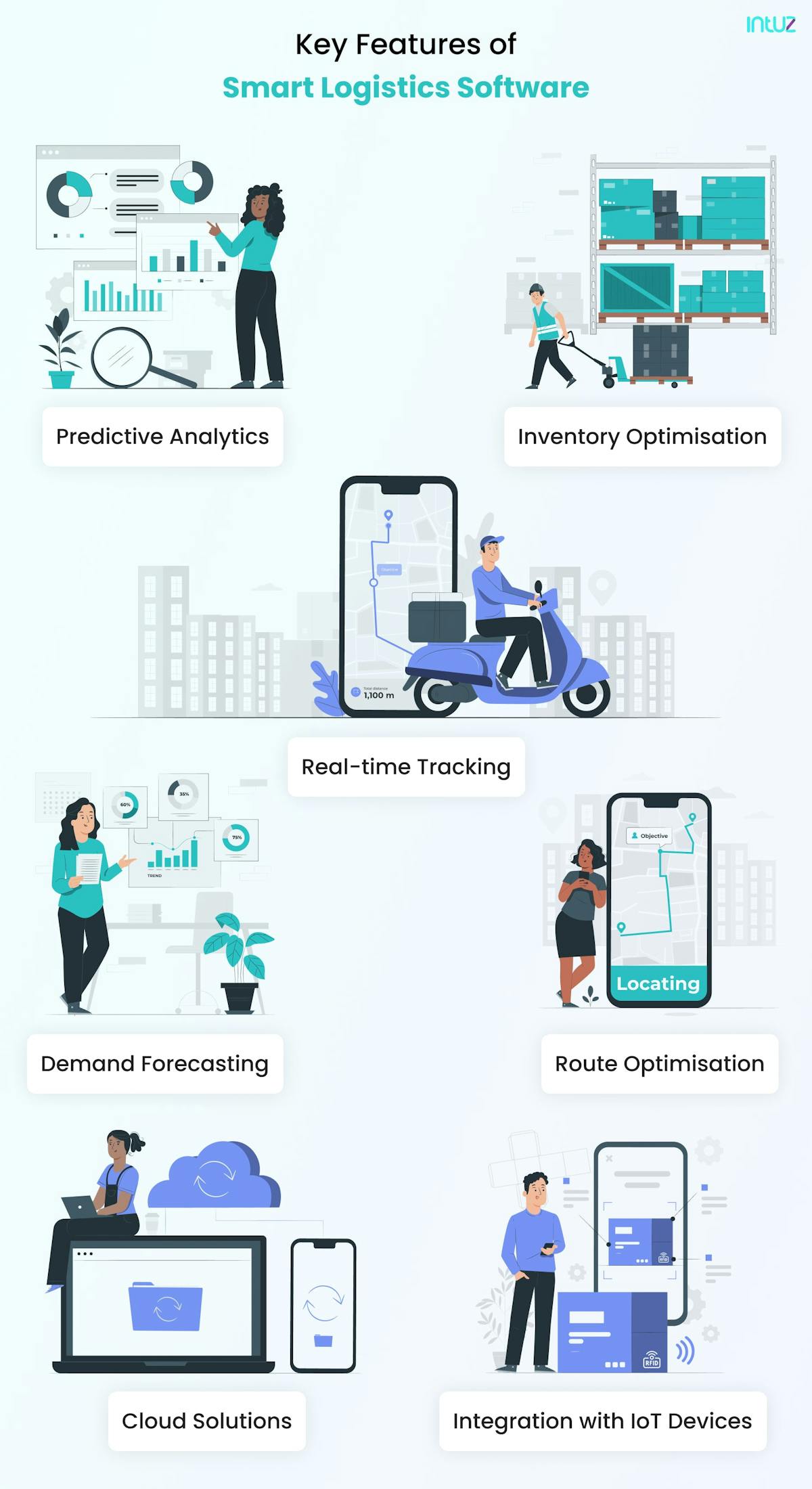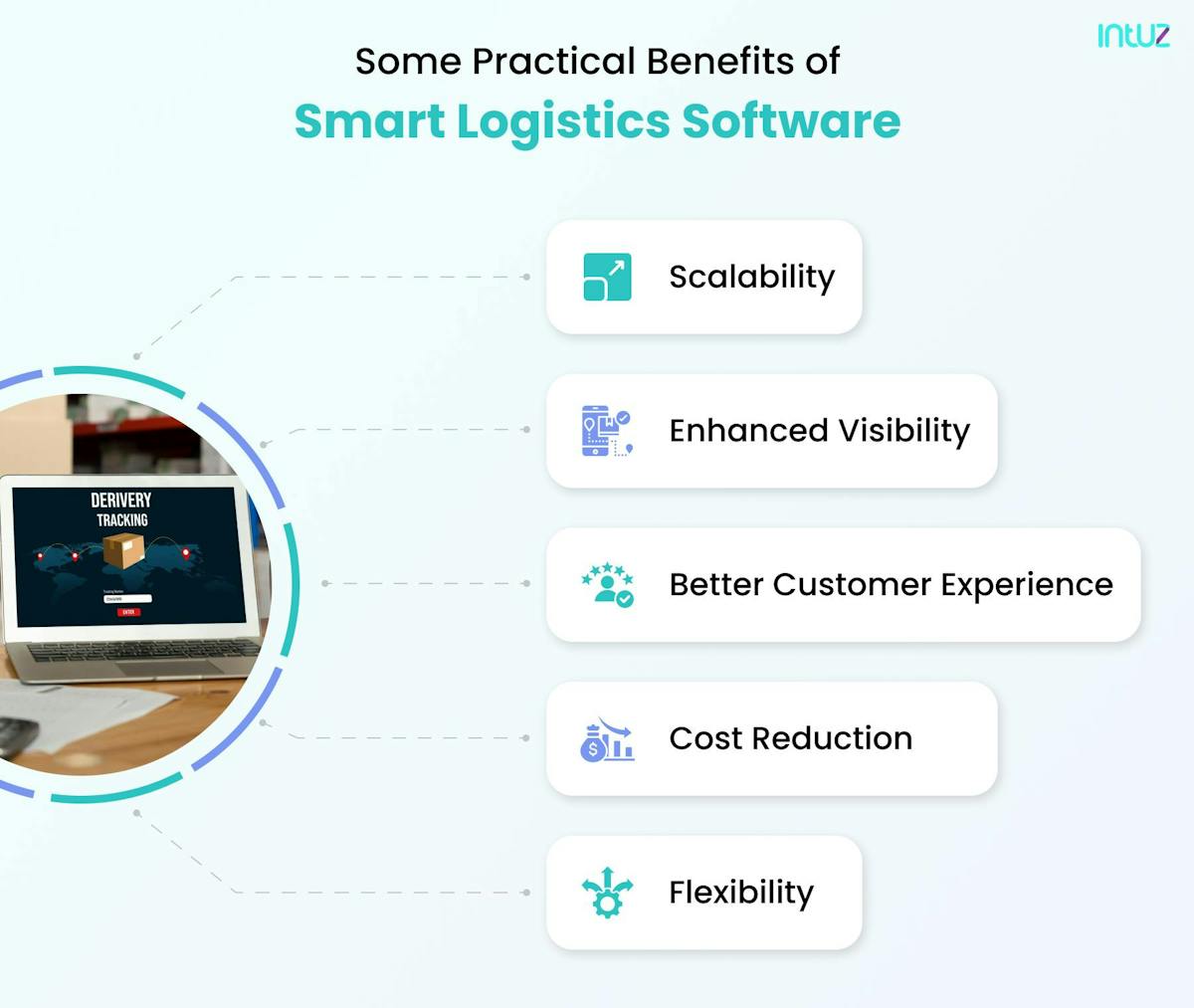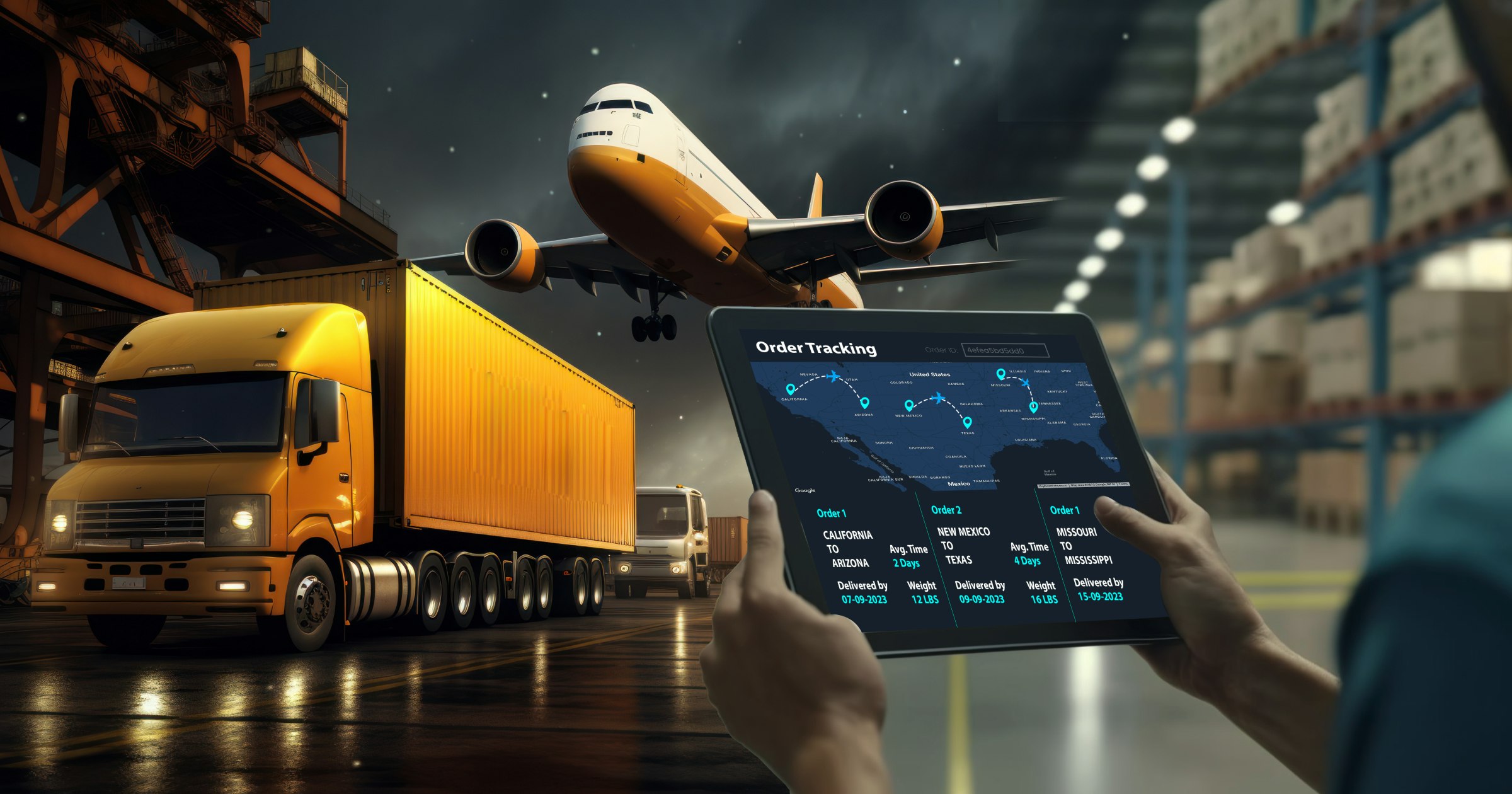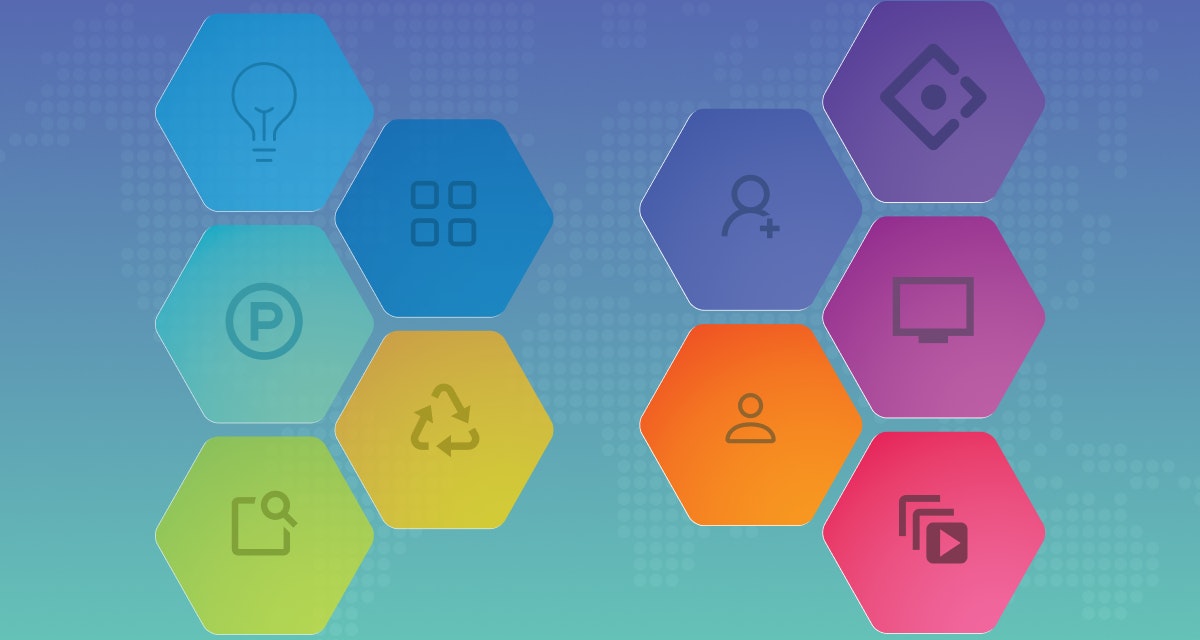Table of Content
In the business landscape, the role of logistics is pivotal. Unlike the old days, when many factors affected the movement of goods, it is not the same in modern times. Today, several advanced technologies play a key role in seamless logistics operations.
And with the advent of Industry 4.0, the speed and effectiveness of logistics have further improved. The usage of technologies like IoT, AI, AR, ML, etc. has increased, pushing the smart logistics market. The projected valuation of the market is over $30.6 billion as of now. Therefore, the adoption of smart technologies is on the rise.
As data is the key element behind the entire smart logistics operation, empowering yourself with smart logistics software is imperative. In this article, we will unpack what smart logistics is, the involved technologies, and everything about smart logistics software.
Supply Chain Efficiency and Smart Logistics
Supply chain efficiency is an all-round concept that includes several aspects, like
How effectively do the products reach the right place at the right time?
What is the lowest possible cost?
How well does the company use its resources to produce and deliver goods?
And more!
As there are several challenges, keeping all aspects, including cost-effectiveness, reliability, and timeliness, in the ideal state can be tough.
Here are some of the challenges that the modern logistics industry faces!
- Delays: The movement of goods depends on several factors like route, vehicle health, traffic, etc. Hence, issues with any of them can lead to delays, which lead to losses. As per statistics, in 2022, 60% of businesses will experience losses due to delays.
- Difficult demand forecasting: Demand forecasting becomes tough as competition increases and customer demands change. Therefore, without the use of technology and a consistent data feed, it can be tough to stock up on inventory.
- Delivery issues: Your fleet can experience transit issues at any time. These can be due to weather, machine breakdowns, congestion, etc., thereby affecting delivery.
- Driver safety: On long routes, sudden machine breakdowns can lead to accidents, compromising the driver's safety and affecting the delivery time of goods.
- Cost control: Businesses tend to spend a lot on ensuring the safe and timely delivery of items. As the cost of each entity, like fuel, electricity, vehicle parts, etc., increases, it is time for efficient use of resources.
Though these challenges may seem like a huge mountain to conquer, with smart logistics, it will be a cakewalk.
IoT In Supply Chain Management: 6 Benefits To Know
Learn MoreSmart Logistics Software
Smart logistics software relies on the use of advanced technologies like IoT, AI, Cloud Computing, etc. for data collection and analysis. Based on the analysis, it helps optimize and enhance various aspects of logistics and supply chain operations. Consequently, making the logistics process more efficient, cost-effective, and responsive to market demands
With the use of state-of-the-art technology, smart logistics software can help counteract the challenges of modern logistics.
What are the Various Features of Smart Logistics Software?
The use of smart logistics software can help you improve your operations significantly. However, there are some features that you need to consider before making your choice.

1. Predictive analytics
Predictive analysis is a feature that can help businesses improve several aspects of their logistics operations. As per the basic definition, predictive analytics uses historical and current data to identify patterns for risks and opportunities. It helps guide decision-makers and anticipate specific future events.
In the case of logistics operations, current and historical data related to weather, vehicle data, factory machine data, etc., can be analyzed to plan routes and contingency repair and maintenance plans. This helps reduce delayed shipments and also saves costs.
Maersk Line is an excellent example of a company that uses predictive analysis to ensure operational efficiency and the timely relocation of empty containers. UPS is another example.
2. Cloud solutions
If you are going for a smart logistics solution, it is necessary for you to choose a cloud-based solution. There are several benefits to the cloud-based solution. For example, a cloud-based smart logistics solution will provide you with cost-effective storage and data processing resources.
On top of all that, it is easier to access data from anywhere with cloud-based smart logistics software. Along with speed, it can also enable instant collaboration with experts.
3. Route optimisation
The essence of logistics lies in the movement of goods from one place to another. If your business can master this, it can lead the market. Route optimization is a feature that enables you to plan the most efficient route for your fleet.
By gaining access to traffic, weather, delivery windows, and vehicle capacity data, businesses can plan the most optimal route for their delivery vehicles.
Based on route planning, you can also alter the shipments for timely delivery. For example, you can send more shipments on a shorter route. Route planning can help save fuel costs and boost customer satisfaction.
4. Real-time tracking
Late delivery of products can lead to a reduced customer attention rate. As per statistics, 17% of customers will stop shopping from a retailer if they receive a late delivery. Therefore, logistics businesses need to ensure the timely delivery of goods.
Timely delivery of products depends on several factors like route, traffic, number of on-the-way shipments, vehicle health, etc. With real-time tracking and access to data from GPS, RFID, and other vehicle sensors, logistics software can help estimate delays and arrival times.
FedEx uses real-time tracking of shipments with its SenseAware tool.
5. Demand forecasting
With time, you obtain heaps of customer data. With the use of this past and present customer data, the AI of the software can find patterns in the order demands of the users along with seasonal trends. Therefore, it allows you to assess future demands and plan your inventory in advance.
Stats suggest that 45% of companies are already using AI-powered demand forecasting. On top of that, as per McKinsey, AI-powered demand forecasting can lead to a 65% decrease in lost sales due to out-of-stock inventory.
6. Inventory optimisation
Inventory optimization is another feature of smart logistics software that is backed by AI. It is closely linked to demand forecasting, as the data analyzed in both cases is the same.
Consumer demand data is analyzed to prevent overstocking and out-of-stock scenarios. Thereby eliminating the possibility of any waste and a bad customer experience.
7. Integration with IoT devices
IoT sensors form one of the primary parts of the entire logistics network. They capture data such as temperature, humidity, location, etc., and share it with the central gateway for analysis. The chosen logistics software should support and integrate with IoT devices for real-time monitoring and effective decision-making.
IoT In Smart Parking Management: Benefits, Challenges & Potential
Learn MoreTechnologies Backing Smart Logistics
A smart logistics software system can have all the features. But they are useless if smart technologies are not used with them. All the necessary features of the software are dependent on modern technologies. Here is a brief overview of all those technologies!
1. IoT
IoT is a network of internet-connected devices. These devices exchange information with the central gateway and each other. In a smart logistics system, IoT devices are fitted in delivery vehicles, warehouse shelves, production machines, etc. Data from these devices is fed to the software for analysis and further application.
2. 5G
The speed and latency of 5G are 10 Gbps and one millisecond, respectively. The low latency and lightning-fast speed of 5G ensure faster and more accurate real-time tracking and remote monitoring of assets.
3. AI and machine learning
AI and Machine Learning, alongside their supervised and unsupervised algorithms, are the backbone of this technological venture. No matter what kind of data it is, the AI of the logistics software analyzes the data for accurate inventory optimization, demand forecasting, route optimization, predictive analysis, and more.
4. Cloud computing
The role of cloud computing is small but significant. Moreover, data is the pivotal element for smart logistics software. Therefore, capturing data from multiple sources in real-time and at faster speeds is easier for cloud-based logistics software. Moreover, cloud computing also allows for faster processing power at an affordable cost, making it an important technology.
5. AR and VR
Remote troubleshooting and training are part of almost every industry sector. In logistics, untimely vehicle breakdowns can lead to delayed deliveries. To avoid this, AR-based remote assistance can be useful.
Moreover, in terms of training, the combination of AR and VR can provide an immersive experience. Thereby enhancing the quality and ensuring a faster and more hands-on learning experience. Logistic software becomes more utilitarian with these technologies.
6. Robotics and Automation
Robots are used in Amazon warehouses for picking, packing, and transferring products. Moreover, the use of drones and autonomous vehicles is also being tested. With the use of smart logistics software, these assets can be tracked and taken care of.
Some Practical Benefits of Smart Logistics Software
After all, efficiency is not the only benefit of smart logistics software; there are many others!

- Enhanced Visibility: With access to data from numerous sources, smart logistics software can help you gain visibility into shipments, fleets, inventory, robots, and other assets.
- Cost Reduction: Optimized routes will lower fuel consumption and lead to fewer vehicle breakdowns, resulting in lower repair and fuel costs. Further, with inventory optimization, there will be accurate spending on inventory, leading to negligible inventory waste.
- Better Customer Experience: The use of data for demand forecasting and route optimization can lead to faster delivery of quality goods to customers. This consequently leads to a better customer experience.
- Scalability: The use of AI and data analysis by the software allows you to know your business's growing demands and scope. In that way, smart logistics software enables you to scale quickly without any significant investment.
- Flexibility: With a smart logistics solution by your side, you can learn about market trends, consumer preferences, and changes in the supply chain quickly. Hence, making your business adaptable to the changes.
Robotic Process Automation for OEMs
Learn MoreConclusion
The logistics market is changing remarkably, and technology is the aspect that’s turning the tables. If you want to survive the cutthroat market competition, it is time to invest in a smart logistics solution. As the volume of such solutions is low, it is best to have one made.
If you are interested in investing in a smart logistics solution, Intuz is your best chance. Intuz has a team of top developers who can help you produce a fully integrated, feature-rich, smart logistics solution.






